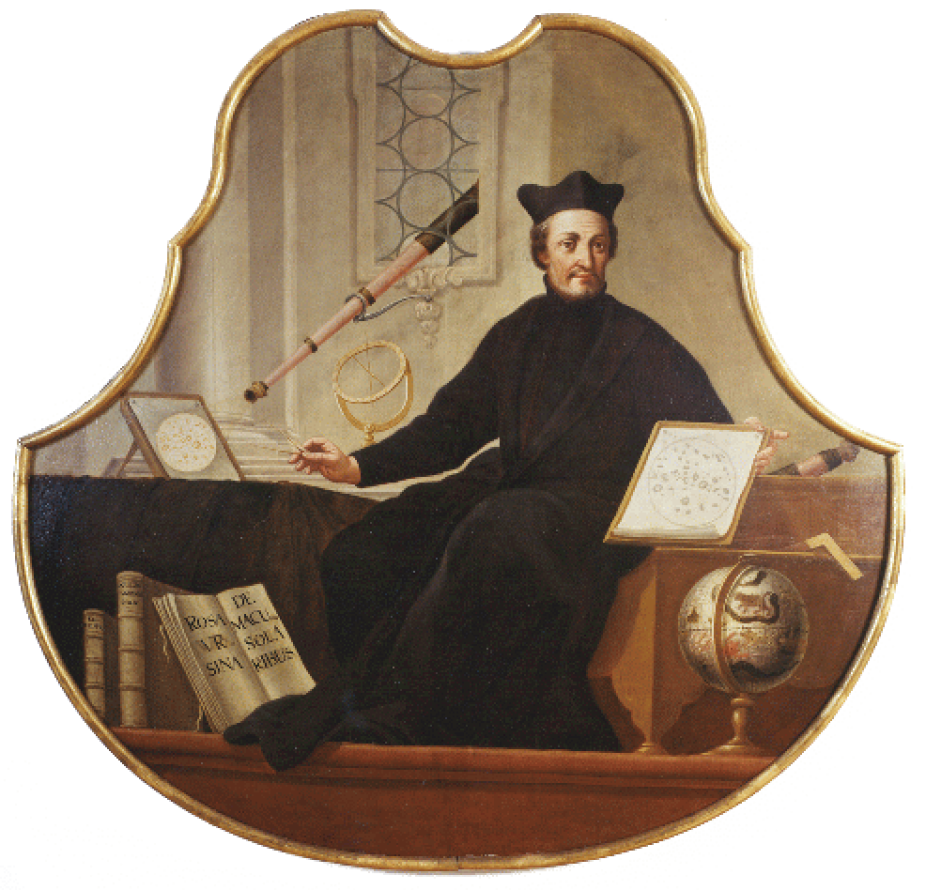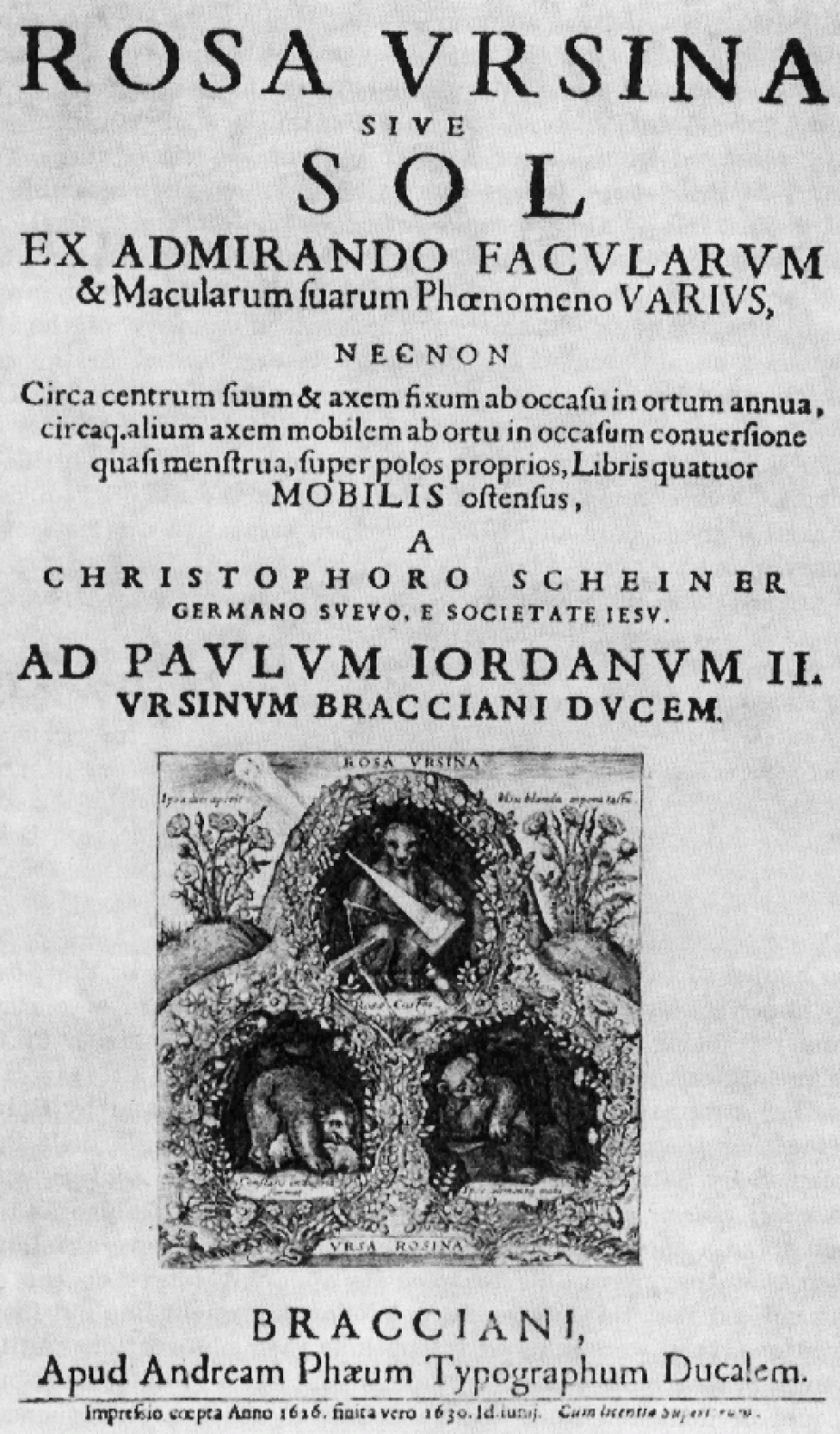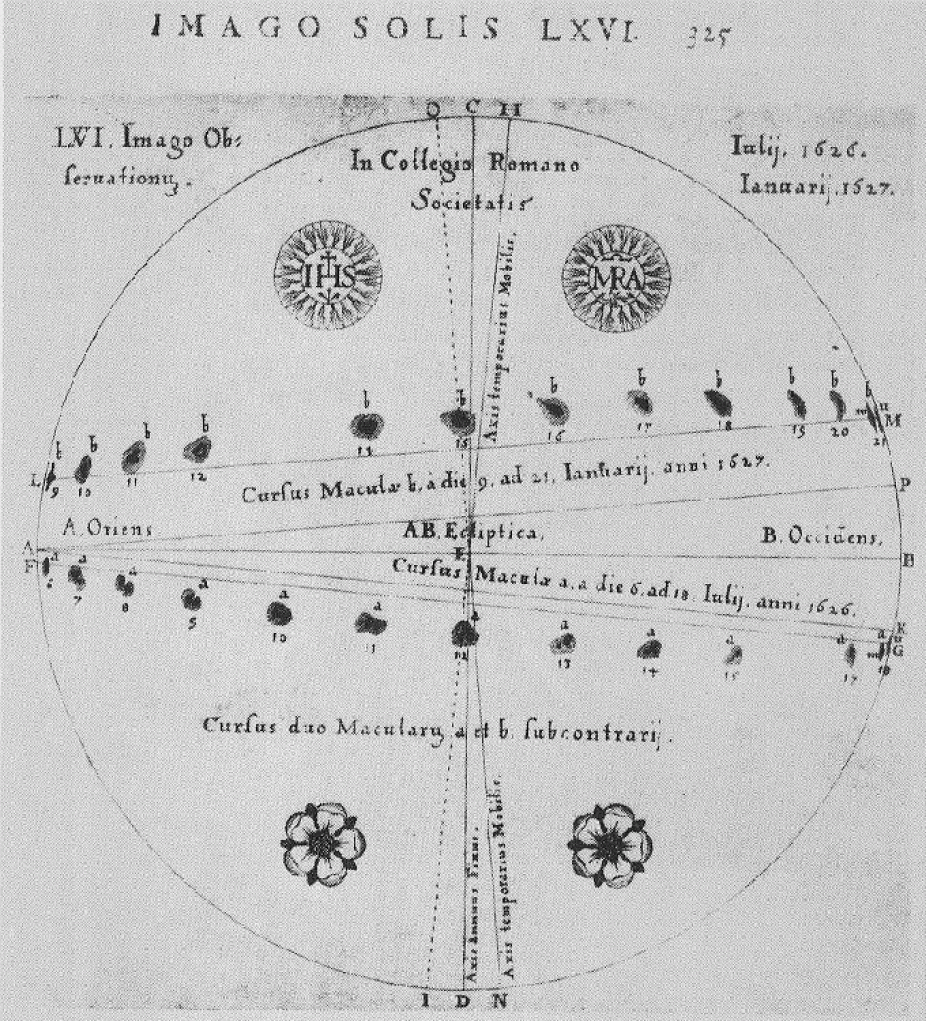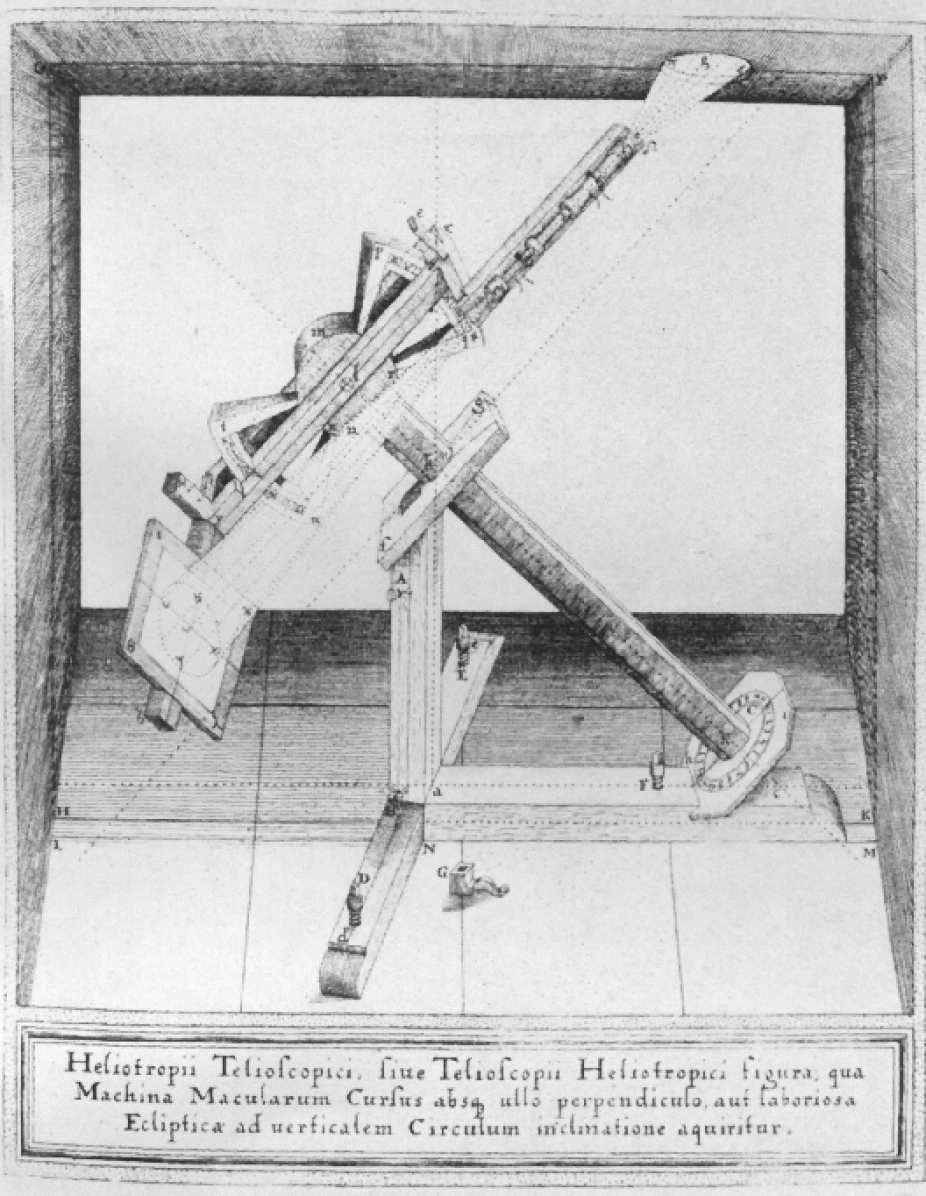Christoph Scheiner (1575–1650)
The Jesuit astronomer Christoph Scheiner was born on July 25, 1575. He started his studies in 1601 at Ingolstadt, where he later taught mathematics from 1610 to 1616.

Portrait of Christoph Scheiner from the Stadt Müseum Ingolstadt.
Wikipedia
The controversy between Scheiner and Galileo over priority in the discovery of sunspots was an important factor (though not the only one) responsible for the degradation in the relationship between Galileo and Roman members of the Jesuit Order. By his own account Scheiner began observing sunspots in March or April 1611, together with his then assistant J.B. Cysat. The first published account of his observations are his "Three Letters on Sunspots" (Tres epistolae de maculis solaribus) dated November 11, 1611, addressed to Augsburg magistrate Mark Wesler (1558–1614) and published in Augsburg in January 1612. These were followed by three more letters in September 1612, again published via Wesler. Scheiner was required by his ecclesiastic superiors to write under the pseudonym "Appelles", to avoid possible embarrassment to the Jesuit order in the event that his findings were to prove invalid.
Scheiner's original opinion was that sunspots were small planets closely orbiting the Sun, a position convincingly refuted by Galileo in his own 1632 “Letters on Sunspots.” Unlike Galileo, Scheiner pursued sunspot observations on a continuous basis for more than 15 years. In the course of doing so he devised techniques that greatly improved the accuracy of observed sunspot positions, and designed specialized solar observing instruments. Results of his observations were published in 1630 in his "Rosa Ursina," a book four years in the making that opened with a biting attack on Galileo. Galileo defended this attack in his famous publication, "Dialogue."
Christoph Scheiner died in Niesse on June 18, 1650
Scheiner's Sketches and Writings
Rosa Ursina

Frontispiece of Scheiner's "Rosa Ursina", published in Bracciano between 1626 and 1630.
Scheiner's Rosa Ursina, written partly as a backlash following Galileo's condemnation, the massive volume (780 pages) did not draw very positive reviews following its publication, nor did it go down too well in history, largely because of the vociferous attacks on Galileo scattered throughout Book I. The book was not without merit, however. In it Scheiner uses his observations of sunspot paths across the solar disk to convincingly demonstrate that the Sun's rotation axis is inclined with respect to the Earth's orbital plane. This observation was taken up as his own by Galileo in his Dialogues as a further argument for the heliocentric hypothesis, which was to further provoke Scheiner into accusations of plagiarism. In addition, the book has proven very useful as a store of sunspot data for the period immediately preceding the Maunder Minimum. Scheiner's later book, "Prodromus pro Sole Mobile," a rabid criticism of Galileo's 1632 Dialogues, was withheld from publication during Scheiner's lifetime, apparently because it was deemed overly distasteful by his ecclesiastic superiors.
The Inclination of the Sun's Rotation Axis

One of a great many sunspot drawings in Scheiner's "Rosa Ursina", reproduced from The History of the Discovery of the Solar Spots, in Popular Astronomy.
This drawing shows apparent paths of sunspots across the solar disk, for two sets of observations taken six months apart. Based on such observations, Scheiner correctly concluded that the Sun's equatorial plane is inclined by 7° with respect to the ecliptic.
Scheiner's helioscope

Scheiner's helioscope, after a drawing in Scheiner's "Rosa Ursina."
While Galileo largely abandoned systematic sunspot observations following the publication of his "Three Letters on Solar Spots," Scheiner devoted himself fully to sunspot observations. He improved on the projection method of Galileo and Castelli by designing a specialized telescopic solar projection instrument, which he called heliotropii telioscopici. This represents the earliest known equatorially mounted instrument.
Bibliography
Mitchell, W.M. 1916, The history of the discovery of the solar spots, in Popular Astronomy, 24, 22-ff.